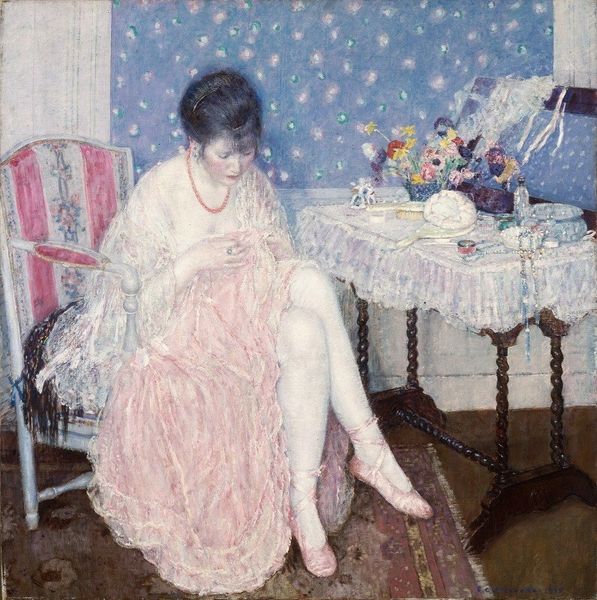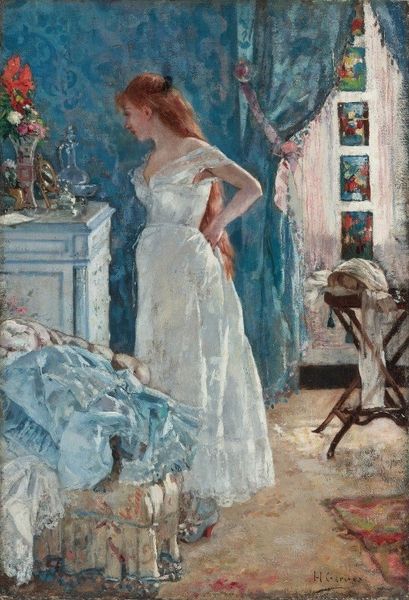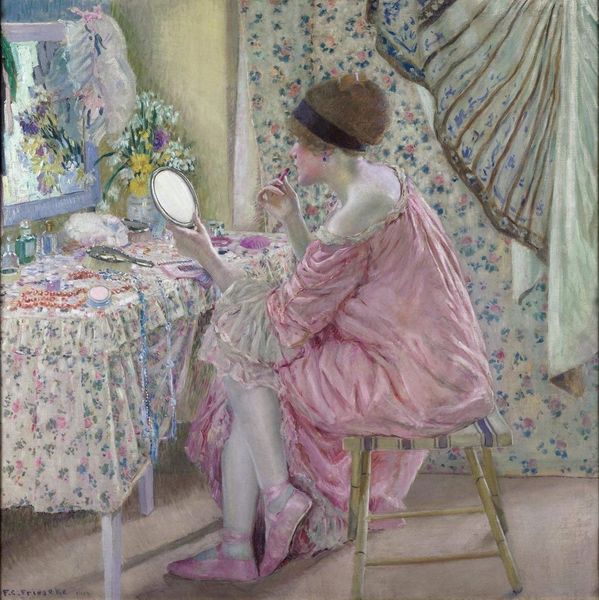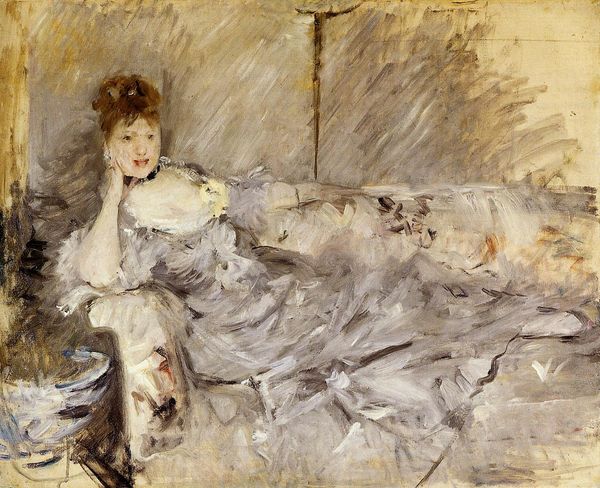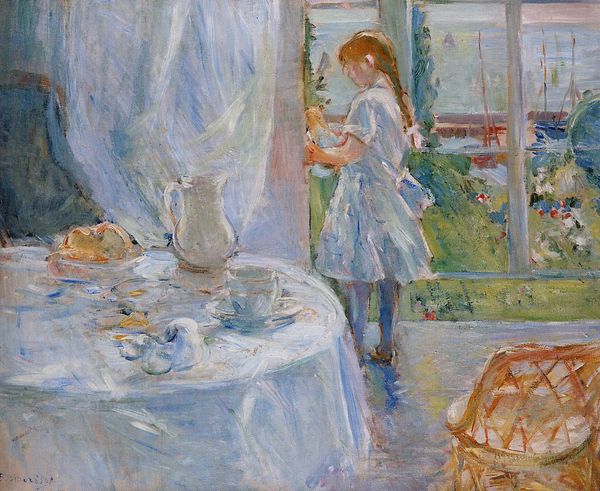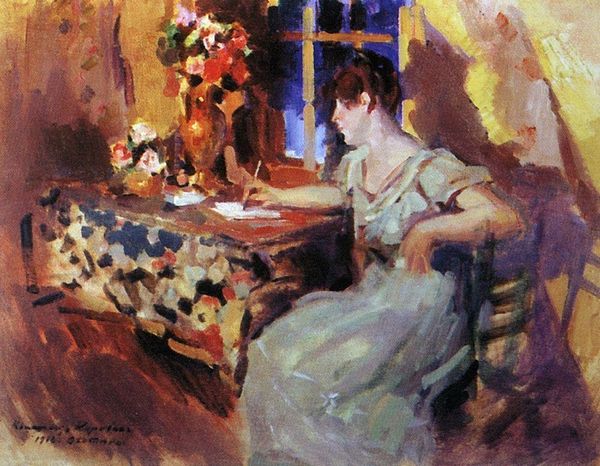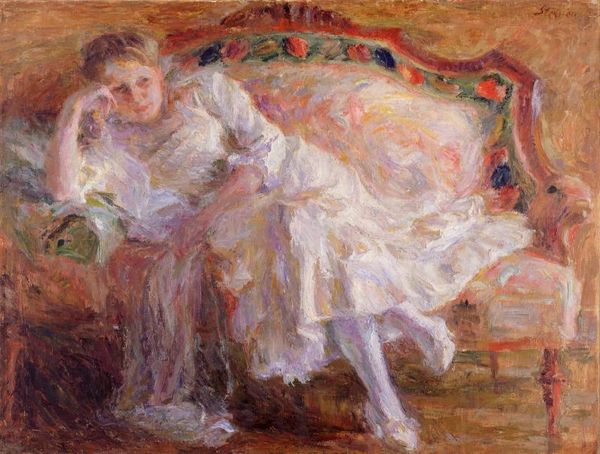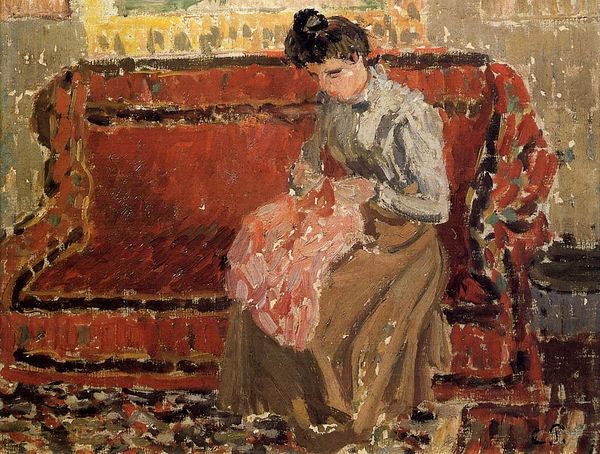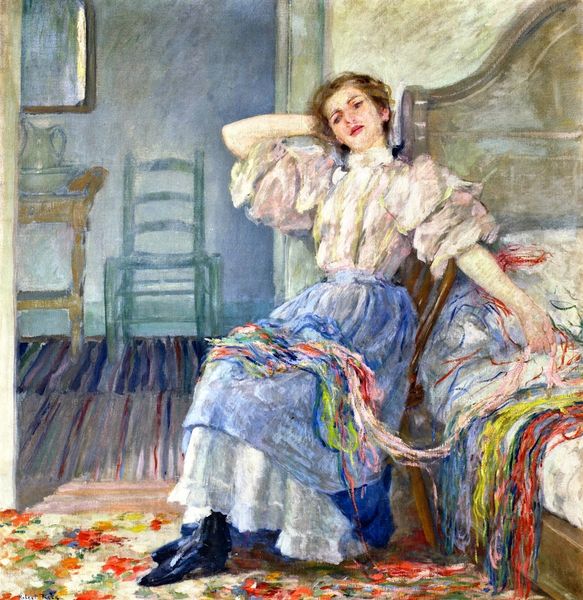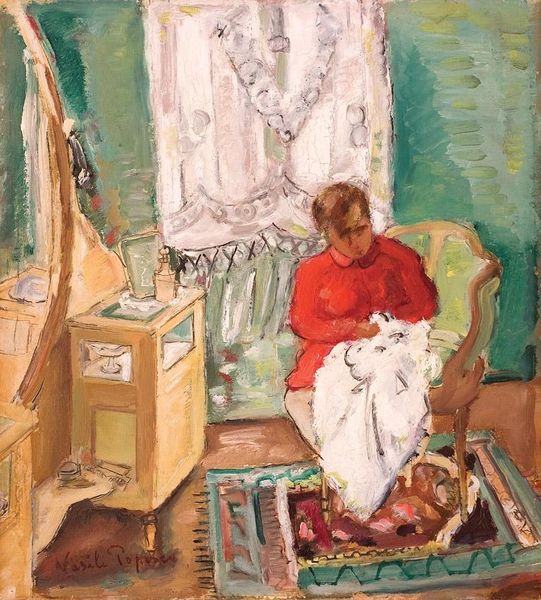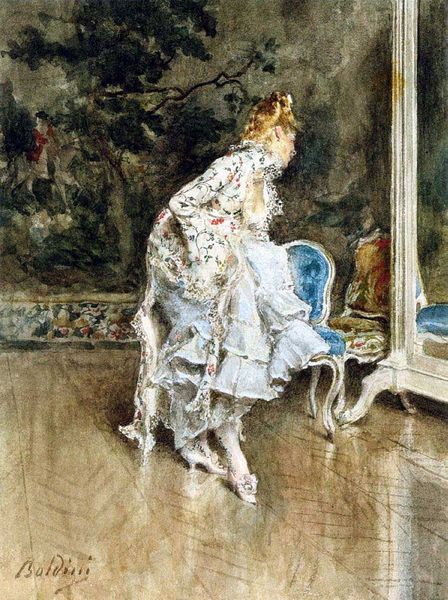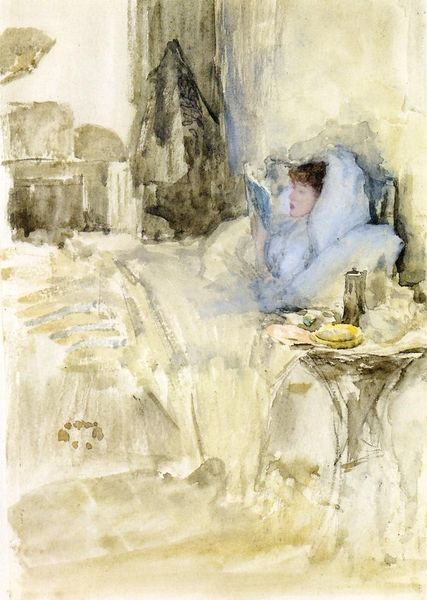
watercolor
#
portrait
#
art-nouveau
#
impressionism
#
figuration
#
oil painting
#
watercolor
#
intimism
#
watercolour bleed
#
watercolour illustration
#
genre-painting
#
watercolor
#
realism
Dimensions: 25.4 x 15.56 cm
Copyright: Public domain
Curator: This is James Abbott McNeill Whistler's watercolor from 1884, "Pink Note: The Novelette." Editor: A lovely, quiet scene. I'm immediately drawn to the intimate setting, almost voyeuristic. The muted colors evoke a sense of privacy, a moment stolen from the world. It also comes across very gendered and performative in an odd way. Curator: Indeed, the watercolor medium itself contributes to that feeling. The fluidity and transparency allow for a softness, especially in the depiction of the woman's dress and the diffused light throughout the room. Note how Whistler balances areas of detail, like the table setting, against more loosely rendered elements. Editor: I'm interested in that "intimate setting," though. Consider the historical context—the constraints placed on women's roles in society at the time. Is this capturing a moment of quiet respite, or does it also subtly reflect a societal confinement, a sanctioned interiority? She can only read or perform at this time, and we get to judge from afar? Curator: You make a compelling point. The composition certainly reinforces a sense of interiority. The woman is surrounded by domestic objects—the table, the bed, the various adornments on the bureau behind her. She’s quite literally framed within her domestic space. The objects surrounding her seem to mimic a traditional stage design as well. Editor: And even the act of reading is significant. Literacy empowered women, offering them access to knowledge and alternative perspectives, but within the boundaries deemed acceptable. Do you see those limits there, in her positioning or affect? Curator: Undoubtedly, Whistler is playing with these conventions. His tonalist approach blurs hard lines. So the setting becomes more of an emotional landscape, rather than a rigid representation of reality. See, the subdued color palette, largely whites and light pinks, enhances this dreamlike quality. Editor: But aren't "emotional landscapes" socially coded? I am captivated by that coded space here and what the artist’s decisions reveal about gender in this particular era. Is she lost or alone? Curator: It’s certainly a piece that invites interpretation, from the structural level of brushstrokes to cultural implications. It provides us a very particular view of femininity in art from a unique period. Editor: A lens into a bygone era, a moment suspended in watercolor, resonating with questions that continue to be relevant today. Thanks for this closer look!
Comments
No comments
Be the first to comment and join the conversation on the ultimate creative platform.
